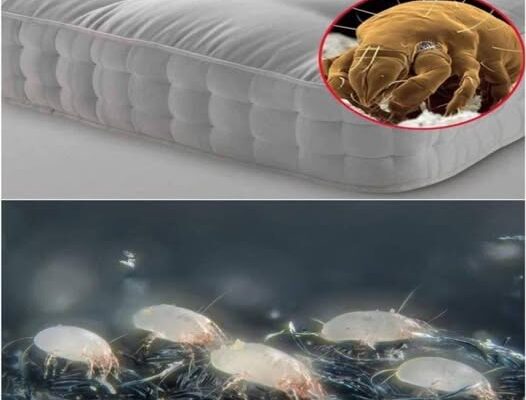House mites, called dermatophagous mites, belong to the class of arachnids and are ubiquitous. The size of these microorganisms is only 0.5 mm and in one gram of house dust up to 2,000 individuals can live. The life cycle of a tick lasts up to 80 days, during which the female can lay up to 70 eggs.

These microorganisms prefer a moist and warm environment and are therefore often found in apartments where the air temperature is between 18 and 25 degrees. Ticks especially like to live in old mattresses, books, stuffed animals, pillows, curtains and carpets.
The Danger of Dust Mites The main threat posed by dust mites is the allergy they cause, known as dust mite sensitization. It often manifests itself as allergic rhinitis and bronchial asthma.

According to statistics, more than half of people suffering from bronchial asthma suffer from allergies to the waste products of these mites.
Ticks leave feces about 30 microns in size and the amount of feces they produce during their life cycle is 200 times the size of the tick itself.

These wastes contain complex protein compounds – enzymes that can destroy human skin cells and become potent allergens. These enzymes degrade the epidermis, causing it to peel off and serve as food for mites.
Even without exposure to these proteins, a person sheds about 2 grams of skin each day, which becomes food for dust mites. They also feed on table scraps, crumbs, and other nutrients.

Ticks die when the humidity is below 45%, but if the humidity is increased for at least a few hours a day, they can survive.
Many people suffer from dust allergies without realizing that their apartment is actually a hotbed of these microorganisms. Getting rid of dust mites often helps eliminate allergies completely.
Methods for controlling household ticks Complete destruction of ticks in the home is almost impossible. However, it is possible to significantly reduce their number by following some advice:
Dust regularly. Replace old carpets and fluffy slippers. Purchase new pillows and change bedding frequently.
Regular ventilation of the room will help reduce humidity.
Keep the room temperature around 21°C, which is lower than the optimal temperature for ticks to breed.
Use a vacuum cleaner with a HEPA filter, which traps the smallest particles.
Spray upholstered furniture and curtains with a handheld sprayer, then vacuum the surface.
In the winter, when it’s cold, remove mattresses and pillows.
Use diatomaceous earth, a bug and tick repellent powder that’s safe for humans and pets.
Don’t make your bed right after sleeping.
Use hypoallergenic pillowcases, sheets and mattress covers.

Buy an air purifier with a HEPA filter to purify and humidify the air.
Use an ultraviolet lamp to purify the air using the quartz method.
By following these recommendations, you can significantly reduce the dust mite population in your home and protect yourself and your loved ones from allergies.



